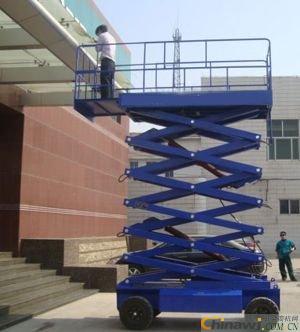Lifts, lifting platforms, aluminum alloy lifts, boarding bridges, self-propelled lifts, fixed hydraulic lift platforms, crank lifts, cylinder lifts, aerial work platforms, hydraulic landing bridges, hydraulic pallet trucks, and other related hydraulic products. Our company is capable of designing and manufacturing custom automotive hydraulic lifts based on specific user requirements. These lifts are essential tools for vertical vehicle transportation, helping to meet the needs of customers who require efficient and space-saving solutions for moving cars over floors. With the increasing popularity of such devices, users should also understand basic maintenance practices to ensure safe and long-lasting operation.
When using an automotive hydraulic lift, regular checks, maintenance, and servicing are crucial not only to extend its lifespan but also to ensure optimal performance during operation. For instance, the transmission system must have sufficient lubricating oil, and consumable parts should be inspected, repaired, or replaced regularly. Mechanical bolts, especially those in high-vibration areas like rotating cranes or shafts, should be checked frequently for looseness. If any loosening is detected, it must be tightened immediately or replaced if necessary.
Here are the recommended maintenance intervals for hydraulic lifts:
1. Daily maintenance (after each shift).
2. Minor repairs after 500 hours of operation.
3. Major repairs after 1,000 hours of operation.
4. Overhaul after 3,000 hours of operation.
Now, let's go through some key maintenance procedures for hydraulic lifts:
1. Regularly inspect and adjust the brake gaps between brake shoes and wheels to ensure smooth and reliable braking. Clean any dirt from friction surfaces using gasoline or a suitable thinner.
2. Lubricate chains, external gears, and hydraulic systems according to the specifications in the lubrication table.
3. Check all chains for slippage or damage. If they exceed allowable limits, replace them immediately.
4. Ensure all connections are secure. Tighten bolts, especially when the structure is under pressure. All connecting shafts should have split pins that are fully opened.
5. Monitor the operation of all mechanisms for unusual noises or malfunctions. Address any issues promptly.
6. Check for jamming or tightness in the electric leveling safety section.
7. Inspect wires and cables for damage and repair or replace as needed.
8. If the motor overheats, stop the machine immediately and troubleshoot before resuming use. Ensure proper lubrication of motor bearings.
9. Keep brush contact surfaces clean and adjust brush pressure so that the contact area is at least 50%.
10. Maintain cleanliness in control boxes and distribution panels, and remove dust from electrical components regularly.
11. Ensure the travel switches of all safety devices operate reliably, and polish any arcing contacts promptly.
Although professional manufacturers produce high-quality automotive hydraulic lifts, regular inspection and maintenance remain vital. During daily use, always perform a no-load check before starting the lift to prevent unexpected failures. This simple step can save time, money, and potential safety risks.
Http://news.chinawj.com.cn
 Submission:
Submission: 
 Submission:
Submission: 
Anchor
Hebei Qianmu Fastener Manufacturing Co., Ltd , https://www.qmjgjfasteners.com